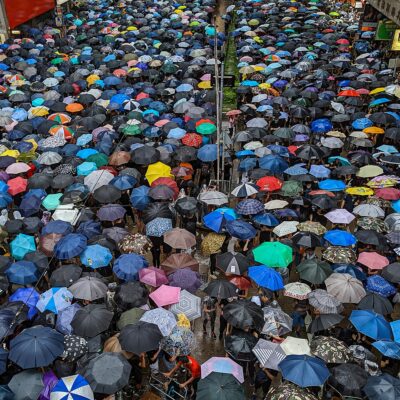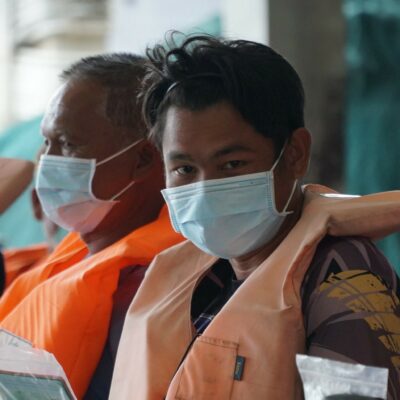You have no enemies, you say?
Alas! my friend, the boast is poor;
He who has mingled in the fray
Of duty, that the brave endure,
Must have made foes! If you have none,
Small is the work that you have done.
You’ve hit no traitor on the hip,
You’ve dashed no cup from perjured lip,
You’ve never turned the wrong to right,
You’ve been a coward in the fight.
Charles Mackay (English poet, 1814–1889)
Former Prime Minister Shinzo Abe who led Japan from 2006-2007 and again from 2012-2020 was a consequential, lucky, and divisive leader in the international and domestic domains.
His legacies are far ranging and include transformative foreign policy and domestic policy. He resuscitated Japan’s global image and managed the mercurial Presidency of Donald Trump adeptly, if not without a bit of luck.
These legacies are not exclusively positive. They include failures, and lingering scandals which have been inherited by current PM Suga Yoshihide; and are shaping how the Suga administration is navigating the complex and interrelated international and domestic arenas.
Divisive domestically and abroad
Castigators viewed Abe and his ruling elite as part of a revisionist, conservative clique, that rejected Japan’s post-WW 2 Pacifist Constitution and was intent on transforming Japan into a less apologetic, more musculature state. They argue that Abe aimed to normalise its military, rewrite Japan’s past, and reject so-called Western norms associated with human rights and individuality through the inculcation of moral education These critics caste a dark picture, claiming that Abe and his followers are part of a ‘Shinto Cult’ called Nippon Kaigi that aims to return Japan to a pre-war nativist identity.
This unflattering portrayal is magnified by accusations of corruption in the form of illegal government expenditure at an annual ‘Cherry Blossom viewing’ party for Abe’s supporters that may have violated the Public Offices Election Act or the Political Funds Control Act. This in addition to the suspect sale of land to a private business, Morimoto Gakuen, with which his wife had a relationship. Conveniently as many have pointed out, documents related to the events have disappeared making prosecution difficult. These, amongst other allegations, are still being played out in the Suga administration.
Still more, Abe has been accused of attempting to roll back individual rights with the 2013 Designated Secrets Protection Bill and marching Japan back towards militarism with the 2015 Peace and Security legislation.
The former Prime Minister has also been criticised for his willingness to work with the administration of outgoing US President Donald Trump, especially for facilitating Trump’s anti-China ‘strategy’ and not standing up against the egregious human rights violations in Xinjiang or pushing back against the National Security Law imposed by China on Hong Kong.
In Asia, China and South Korea viewed Abe through the lens of his maternal grandfather Kishi Nobusuke who governed Manchukuo, was a tried rehabilitated war criminal, and architect of the post-World War 2 security treaty with the US.
In 2014, a diplomatic row erupted when Beijing and Tokyo accused each other of being like the fictional villain Lord Voldemort, as the two nations accused each other of militarism and destruction in the region. In the case of South Korea-Japan relations, after the reneging of the December 2015 so-called ‘Comfort Women’ Agreement by the Moon Jae-In administration we saw a negative spiral in relations including the threat to withdraw from the GSOMIA Intelligence sharing agreement, a Supreme Court Case against Japanese corporations for forced labour, and South Korea being removing from Japan’s ‘white list’ to have preferential access to critical materials for the production of semi-conductors.
But Abe’s tenure as Prime Minister has also accrued accolades from influential and non-partisan observers, think tanks, and policy practitioners, for example from the Lowy Institute’s Asia Power Index which has deemed Japan ‘the leader of the liberal order in Asia’. The institute has highlighted that Japan continued to punch above its weight in terms of its diplomatic influence under Abe, despite the rapidly changing power balance in the region associated with China’s re-emergence as the centre of the Indo-Pacific economy.
An extensive, multinational report by the University of British Columbia in July 2020 echoes these findings and argues domestic and international structural changes under Abe transformed Japan from a reactive to proactive player in international affairs, demonstrating its agency to effect and support the rules-based order as it faces the strains of a unilateralist US and a revisionist China.
Even the latest State of Southeast Asia 2020 survey (but also in 2017, 2018, 2019) of policy makers in Southeast Asia by the ISEAS-Yusof Ishak Institute—which surveyed all ten ASEAN countries and over 4,000 Southeast Asian leaders—found Japan to be the most trusted partner in the region. This is no small due to the former PM’s frequent visits to the region, Japan’s extensive and long-term official development assistance and foreign direct investment in the region.
These last three views reflect that during Abe’s second term of nearly eight years in office, he migrated away from ideological issues such as those related to the Yasukuni Shrine and Japan’s wartime legacy to a much more pragmatic domestic and foreign modus operandum, that while incremental, was consequential at home and abroad.
Mixed domestic legacy
Abe’s mixed domestic legacy is associated with his signature so-called ‘three arrows’ of aggressive monetary policy, fiscal consolidation and a focus on structural change, his policy to help women enter the paid workforce known as ‘womenomics’, and changing Article 9 of the Japanese Constitution relating to the use of force by the state.
On the economic front, Abe inherited the acute damage done to the Japanese economy by the March 2011 Great East Japan Earthquake which resulted in the tsunami that caused the Daiichi Fukushima nuclear incident. This came in tandem with the Sino-Japanese economic fallout following the of the nationalisation of the Senkaku islands by the former Yoshihiko Noda administration. Abe also inherited the failed policies of successive administrations to deal with Japan’s demographic issues, a decades-long stagnant economy, and a highly engendered economy.
In 2012, Japan’s nominal GDP was ¥18 trillion lower than in 1999. The economy was standing still and according to the financial advisory firm Pelham Smithers Associates, when Abe took over in December 2012 Japan’s top companies, including Sony, Panasonic, Alps Alpine, Mazda, Toshiba, Fujitsu and NEC, were imploding.
Abe’s temerity for change along with the appointment of Haruhiko Kuroda as governor of the Bank of Japan allowed for unlimited quantitative easing to be the central pillar of ‘Abenomics’. It garnered mixed but important results.
According to Japan Macro Advisors, quantitative easing produced an average nominal growth rate of 1.7 percent between 2013 and 2019. Including the downward pressures on the economy such as an aging population, this should be understood as a moderate success compared to nominal GDP growth between 1993-2012, which was zero percent.
Corporate profits also surged, until the COVID-19 pandemic hit, through corporate tax deductions and the promotion of corporate governance reforms to increase transparency and inculcate new thinking into corporate Japan.
‘Womenomics’ also had mixed success. Raising female labour participation to 72.6 percent in 2019, a level far about the average OECD standard, was an important milestone; as was the slight rise to 7.8 percent in 2019 of management roles lead by women compared with 6.4 percent in 2019. In both cases, the COVID-19 pandemic laid bare the relative weakness of ‘womenomics’ in terms of real institutional and cultural change with women taking the brunt of lay-offs of non-permanent workers. These measures strongly support an assertion by Kristin Wilson, cofounder of WomEnpowered International, that ‘women’s employment gains (and losses) demonstrate how women remain the ‘shock absorbers’ of the Japanese economy.’
Abe’s response to the COVID-19 pandemic was mixed. Japan’s death rate has been very low compared with France, Italy and Britain, and is similar to South Korea, a country that garnered praise for its response.
Policy experts have criticised Abe’s sudden decision to close all schools on March 2nd, following slow action in other areas such as border closures; and the distribution of so-called Abe-masks without the consultation of experts, which were widely criticised for being too small.
The handling of the Diamond Princess Cruise ship in early February 2020 was also heavily criticized domestically and internationally for having let passengers infected with COVID-19 languish on the ship and then for letting passengers leave and use public transportation. In contrast, some observers have argued that the Diamond Princess incident on retrospect was comparatively very well handled compared to cruise ships in other countries.
Abe’s response to the pandemic certainly lacked insufficient communication, transparency, and expert consultation. Importantly, while infection rates and deaths associated with COVID-19 remained comparatively low until his resignation, the recent explosion in infections in Tokyo and other urban areas suggests that appropriate prevention and mitigation policies were not developed during his time as PM.
The inability to push through constitutional reform also represents a failure of leadership, as Abe personally lamented in his resignation speech. Abe could not sell his vision of a revision to Article 9 of the Constitution to voters despite test launches of North Korean Inter-Continental Ballistic Missiles over the Japan in September 2017, or Chinese assertive behaviour in both the East and South China Seas. Notwithstanding, both the 2013 Designated Secrets Protection Bill and the 2015 Peace and Security Legislation were critical to enhancing Japan’s security by strengthening its ability to share and protect sensitive intelligence information, and to defend its allies and friends if under attack.
Consequential international legacy
The Lowy Institute’s Asia Power Index and the Institute of Southeast Asia Studies (ISEAS) 2020 Southeast Asia Survey are excellent litmus tests as to the consequential and positive legacy of Abe.
In the former, successive indices have continued to view Japan as the third most powerful state in Asia despite the COVID-19 pandemic, continued demographic decline, and an economy that continues to struggle to grow robustly. Japan’s high ranking, behind only the US and China, is attributed to its ability under Abe to use its diplomatic resources to ‘punch above its weight’ in terms of regional power dynamics.
The ISEAS survey found that Southeast Asian countries view Japan as the most trustworthy of partners in and out of the region, with both the US and China seen as unreliable or less trusted.
This should come to no surprise to observers. Abe’s first visit abroad after returning to the Prime Ministership was to Indonesia to announce the ‘five principles’ of Japan’s ASEAN diplomacy. Since that time, he has visited every single ASEAN country more than once. While visits by top leadership are important barometers of a relationship, so is Official Development Assistance, Foreign Direct Investment and championing issues that Southeast Asian countries deem critical.
Here the Japan-Mekong Delta Initiative is a salient example, as are the various infrastructure projects that Japan has initiated, including the East-West, North-South and Southern Corridors. These projects are all aimed at increasing intra-ASEAN integration such that they can enhance their own strategic autonomy vis-à-vis regional states such as China and the US.
Japan under Abe has also championed important trade agreements such as the Comprehensive and Progressive Agreement for Trans-Pacific Partnership (CPTPP) and the inclusion of Southeast Asian states such as Vietnam, Malaysia, Brunei, and Singapore; and while not signed under Abe, the Regional Comprehensive Economic Partnership has signified not only Japan’s commitment to the region but aimed to re-centre ASEAN as the epi-centre of regional integration.
Aside from Japan’s immediate backyard, in the wake of the irrational withdrawal from the CPTPP, the Abe’s administration championed multilateralism through substantial agreements such as the Japan-EU Economic Partnership Agreement, and the Partnership on Sustainable Connectivity and Quality Infrastructure between the European Union and Japan. This is in addition to other material multilateral agreements such as the Australia-Japan-United States Trilateral Infrastructure Partnership.
Scholars such as Yuichi Hosoya argue that this commitment towards multilateralism represents a shift away from a passive foreign policy approach that focused on bilateral relations to one that has a macro perspective in which Japan proactively attempts to shape the regional order as evidenced by the Free and Open Indo-Pacific Vision.
Aside from Abe’s transformative commitment to multilateralism, there are tangible examples of the limits of Abe’s foreign policy, such as the inability to make any progress on returning Japanese citizens kidnapped by North Korea, and the failure to secure a bilateral meeting with Secretary General Kim Jung-un. The former PM was also unable to convince President Trump to return to the CPTPP or resist a mini-trade deal with the US.
Importantly, Abe was lucky. He was fortunate in that his golden golf club gambit with then President-elect Trump created the dynamics for him to be arguably one of the most adept foreign leaders at managing the mercurial president. It was also fortunate that President Trump’s often ill-conceived policies did not backfire or have unintended consequences as seen after Chinese national and Huawei chief financial officer Meng Wanzhou was arrested in Canada at the extradition request of the US. Still today, Canadian former diplomat Michael Kovrig and Canadian Michael Spavor, a consultant who has worked North Korea, languish in Chinese detention facilities without regular consular access, family visits, or legal representation.
Abe’s legacies and their impact on future administrations’ domestic and foreign policies
Much of Shinzo Abe’s legacy is still to be written. He set in motion foreign policy initiatives such as the Free and Open Indo-Pacific Vision, the Quadrilateral Security Dialogue, and the foundations for a Japan-Australia Reciprocal Access Agreement, all while strengthening the Japan-US alliance. These will inculcate Japan into a new security architecture in the Indo-Pacific that is multi-faceted and based on promoting a rules-based order, trade, development through infrastructure and connectivity, and non-traditional security cooperation.
Concurrently, the CPTPP, the recently-signed Regional Comprehensive Economic Partnership, the Japan-EU Economic Partnership Agreement, and the Japan-EU Asian Infrastructure and Connectivity Initiative are further legacies of Abe that will have long lasting economic, security, and strategic benefits for Japan and the Indo-Pacific region.
PM Suga has embraced these foreign policy pillars as they have accrued Japan a prominent role on the international stage, and they demonstrate Japan’s commitment to multilateralism and to buttressing international institutions. I expect a continuation of these policies, as evidenced by Suga’s first trip abroad to Vietnam and Indonesia, stressing a free and open Indo-Pacific, ASEAN centrality, and further engagement with Southeast Asia and the Indo-Pacific through the Resilient Supply Chain Initiative.
These initiatives are strong evidence against critics who argue that Abe and his conservative supporters are intent on re-militarising Japan and returning to great power status. On the contrary, these policies are representative of 21st century middle power diplomacy, which I’ve previously described as having a ‘regional focus to problem solving, building resilience to withstand and seize missteps by great powers and an outcome-focused approach’.
His domestic legacy on the other hand has been blighted by external factors such as COVID-19 and internal factors including lingering scandals, and his association with a right of centre conservative brand that still argues over Japan’s imperial past. Rightly or wrongly, Abe’s domestic legacy will in part be always associated with the Moritomo Gakuen land acquisition scandal and allegations of illegal government spending. As Abe’s former Chief Cabinet Secretary, Suga is associated with these issues in terms of being accused of attempting to cover them up.
Moreover, much of Abe’s domestic reforms have been heavily impacted by the COVID-19 pandemic. Whether Suga can manage the post-pandemic economy and doubles down on the successful aspects of ‘Abenomics’ is questionable at this stage. Much will depend on his longevity as PM and the political machinations within the Liberal Democratic Party.
It will also depend on what happens in Washington and Beijing. President-elect Biden represents a return to a more predictable Japan-US dynamic—one that has hiccups such as over burden-sharing, but one that is institutionally and strategically sound. Abe’s tenure as PM has a lot to do with that stability. He invested heavily in both cultivating a personal relationship with Trump but also robustly and proactively investing in the US and bilateral relations. For example, he dramatically increased the Japanese diplomatic, academic, think tank, and business footprint in Washington to strengthen institutional ties and be part of shaping a shared view of the Indo-Pacific and its challenges. PM Suga would be wise to continue this approach.
While relations with the US have strengthened under Abe, Sino-Japan relations returned to a semblance of their cold politics/hot economics dynamics after a very fraught period from 2012-2017. This improvement is in part due to Abe’s astute diplomacy with China. It is also due to Beijing’s assessment, following the election of President Trump, that it needed to mend relations with Tokyo to concentrate diplomatic bandwidth on the US as the Trump administration began to escalate its confrontational approach towards China.
Abe’s China policy, inherited by Suga, is increasingly being tested by the intensifying US-China great power rivalry, the increasing inward-looking nationalism associated with the COVID-19 pandemic, and the conundrum of how to thread the geopolitical needle of engaging with China while at the same time building a robust US-Japan alliance and other multilateral and bilateral strategic partnerships to prevent a Machiavellian ‘might is right’ international order.
Whether Suga will be able to navigate this geopolitical quagmire is yet to be determined, but we should expect Abe to be part of that process. In that sense, the former PM’s real legacy has yet to be written.
Image: Shinzo Abe portrait. Credit: thierry ehrmann/Flickr




